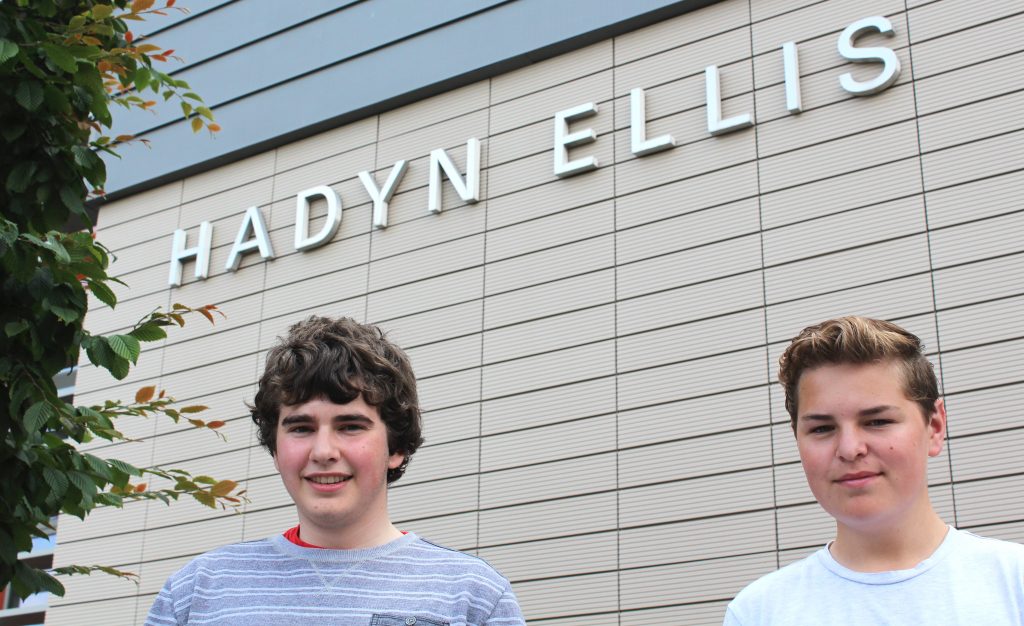Posted July 17th 2015

During the week, we were at the Hadyn Ellis Building learning about mental health research. The Hadyn Ellis Building is a modern building where lots of research is done to help better understand various mental illnesses such as schizophrenia, ADHD, depression, bipolar disorder, etc.
We were greeted with a warm welcome. Lots of people explained their research and how it is carried out. We did various activities: we looked in the psychology lab, the ‘wet lab’ and CUBRIC where MRI scanning takes place. We also talked to some of the researchers about what they did. It was very interesting and intriguing and helped us to better understand mental health research.
People with mental health problems can be faced with huge problems in everyday life; not just dealing with the symptoms but they can also have problems with friendships and at school. This is because sometimes others don’t understand the difficulties individuals with mental health problems are faced with.
When people with mental illnesses are adults, they may suffer from a lack of employability. This could be because they don’t have a good enough education, or, the employers don’t think that they are capable. The research that is carried out helps people that suffer from various different mental illnesses in lots of ways – diagnosis, treatment and better information for patients and families. Medication has been developed to help ease symptoms of some mental illnesses (e.g. Ritalin for ADHD). Cognitive behavioural therapy can also help people with mental health problems. It may not cure the disorder, but it can help people cope and overcome their difficulties.
There are various approaches and methods that researchers can use to find out about mental health problems. Researchers can use adoption or twin designs to show to what extent genetics and the environment play a role in mental illnesses. Researchers are also able to use animal models to research mental health problems.
In the laboratory, we saw how the public were involved in helping out in the research and how the research being done gives scientists a better understanding of mental health problems. A large number of healthy individuals and people with mental health disorders gave blood or saliva samples so that their genetic makeup can be looked at under a microscope. Various machines and techniques are used to show how people’s genetics are altered when they have a mental disorder.
We also spent a day in the Psychology Lab. Psychological research can also contribute to a better understanding of our mental state. We took part in a fear conditioning experiment. The levels of moisture on our skin were measured to find out how our body reacts when we are startled. Some studies have suggested that sometimes people don’t show fear, which might be linked with aggressive behaviour.
One of the researchers from the ECHO study took us to CUBRIC where we were able to look at MRI brain scans. This research examines children with part of one of their chromosomes deleted. Research has indicated that this deletion can change the structure of the brain which significantly increases the chance of developing disorders such as schizophrenia, ADHD, and ASD.
Genetics only tell part of the story
We have learnt that while genetics do play a significant role in mental health problems, the environment can also play a role in mental health problems. Mental health research is sometimes difficult to conduct. For example, large numbers of people are required for any findings to be reliable, especially for genetic studies. Some experiments are intense and time consuming which means that research is harder to carry out. It is important to make sure that the people participating are informed and looked after well.
The public could potentially play a huge role in helping with mental health problems. More people could be involved in the research – for example answering questions about their mental health, giving blood and saliva samples, and participating in experiments.
It is also really important for the public to understand what it is like to have a mental health problem. Often, unlike physical disabilities, mental health problems can’t be seen from the outside. However, these individuals often have a really hard time coping with everyday life. It is therefore really important that there is a better understanding of mental health problems in all age groups.
During our week we enjoyed our experience here, and it has made us think about participating in research in the future.
Sign up now and receive new blog posts to your inbox.
